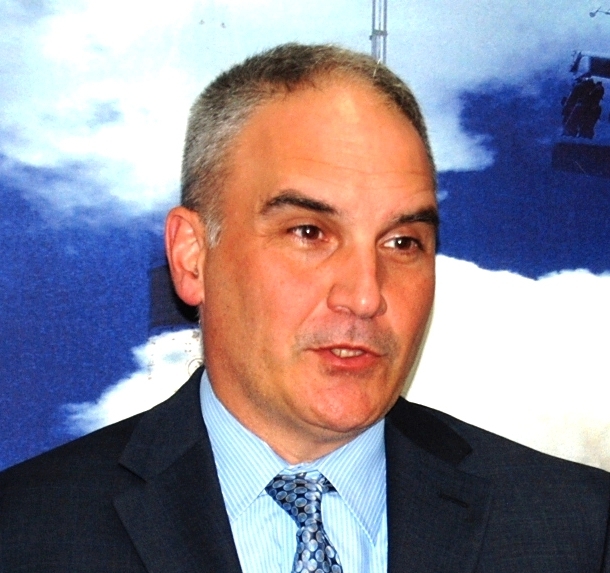Boeing remains optimistic that Seoul will select F-15 SE
Official expresses hope for Seoul to purchase blend of aircraft
By KH디지털2Published : Oct. 30, 2013 - 18:06

Despite skepticism over the F-15 Silent Eagle’s sustainability and survivability in the future combat environment, Boeing still has an optimistic prospect in South Korea’s high-profile fighter procurement project.
Based on its mature platform and the blend of capabilities proven through battle experiences, a senior Boeing official expressed confidence that the F-15 SE remains a strong competitor for the multibillion-dollar project.
“When you look, in aggregate, at the mission requirements this aircraft has to fulfill, we bring with our aircraft along with our systems the best blend of capabilities to do the entire spectrum of the Korean operational mix for requirements,” Howard Berry, vice president of sales global strike defense, space and security, told The Korea Herald.
“Boeing will promise to the Korean government a fully combat-capable aircraft from the day its wheels are on the ground in Korea in 2017. I would challenge my competitor to honestly make that same statement.”
The F-15 SE was the sole final candidate for the project as the others -- Lockheed Martin’s F-35A and European Aeronautic Defense and Space Company’s Eurofighter Typhoon -- failed to fit the 8.3 trillion won ($7.8 billion) budget.
But Seoul’s defense decision-making body rejected it in September as criticism surged that the government short-listed the oldest platform, first produced four decades ago, because of the price, not the capabilities and broader strategic interests.
Seoul has decided to restart the project with various options in mind, including increasing the budget and purchasing a mix of fighter jets rather than only from one company.
Berry, who was visiting the Seoul International Aerospace & Defense Exhibition at KINTEX in Ilsan, Goyang City, expressed hopes for a decision to purchase a blend of fighters.
“It is clear to us that the Republic of Korea Air Force would like to buy some amount of the F-35 and we take no issue with that. It again offers some unique capabilities,” he said. “But we still feel that Korea will be better served by a blend of aircraft than all F-35s.”
On the contentious issue of the F-15 SE’s stealth capabilities, Berry stressed that all-aspect stealthy fighters have to give up some of important combat capabilities.
“In aggregate, we have the best mix of capabilities as F-35 has had to make trades to get all-aspect stealth,” he said. “They have had to trade away other capabilities that we have not -- capabilities like payloads, persistence, speed, maneuverability.”
Touching on the argument that the fundamental platform of the F-15, which was designed four decades ago, is not suited for the increasingly challenging future battle conditions, he said it was an “exaggeration.”
“All new key elements of the aircraft -- whether we are talking about the computer, the electronic warfare suite, the radar, the cockpit, the flight controls -- all the major core systems are all new,” he said.
“I would further argue to you that there is nothing you are going to find on the F-35 that you are not going to find on the F-15.”
In March 2009, Boeing first unveiled the two-seat, two-engine F-15 SE with a maximum speed of mach 2.5, which was developed based on what it calls “combat-proven” F-15 Eagle.
Boeing has focused on the fighter jet’s overall survivability, cost-effectiveness and “tactically useful” radar cross-section reduction, pointing out that it would still retain the F-15’s long-range, large payload capabilities.
By Song Sang-ho
(sshluck@heraldcorp.com)



![[Herald Interview] 'Amid aging population, Korea to invite more young professionals from overseas'](http://res.heraldm.com/phpwas/restmb_idxmake.php?idx=644&simg=/content/image/2024/04/24/20240424050844_0.jpg&u=20240424200058)












![[KH Explains] Korean shipbuilding stocks rally: Real growth or bubble?](http://res.heraldm.com/phpwas/restmb_idxmake.php?idx=652&simg=/content/image/2024/04/25/20240425050656_0.jpg&u=)

